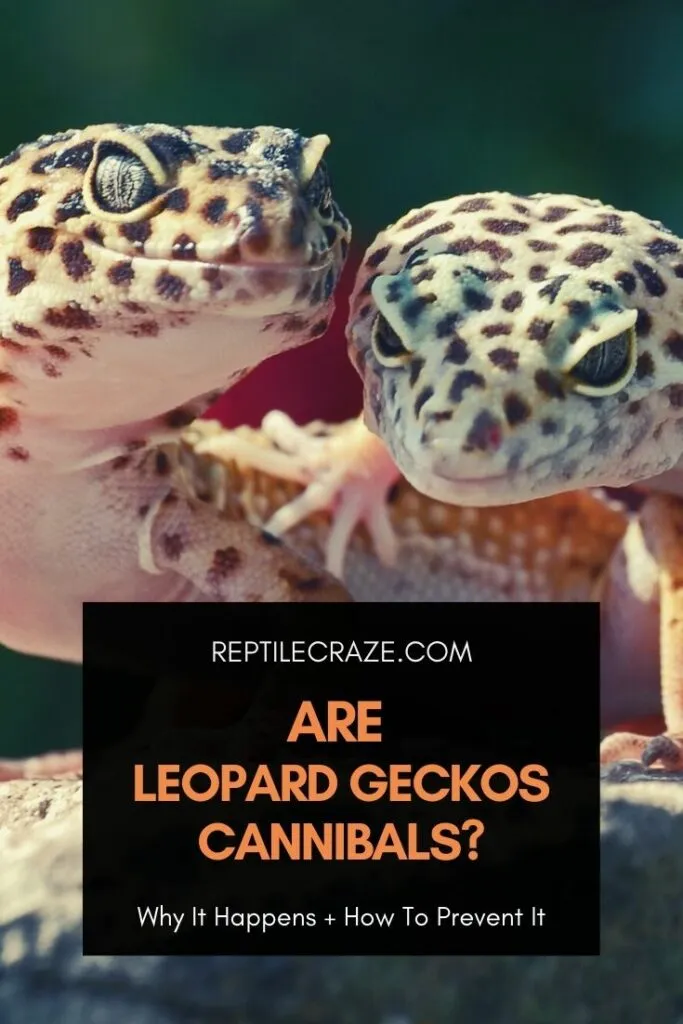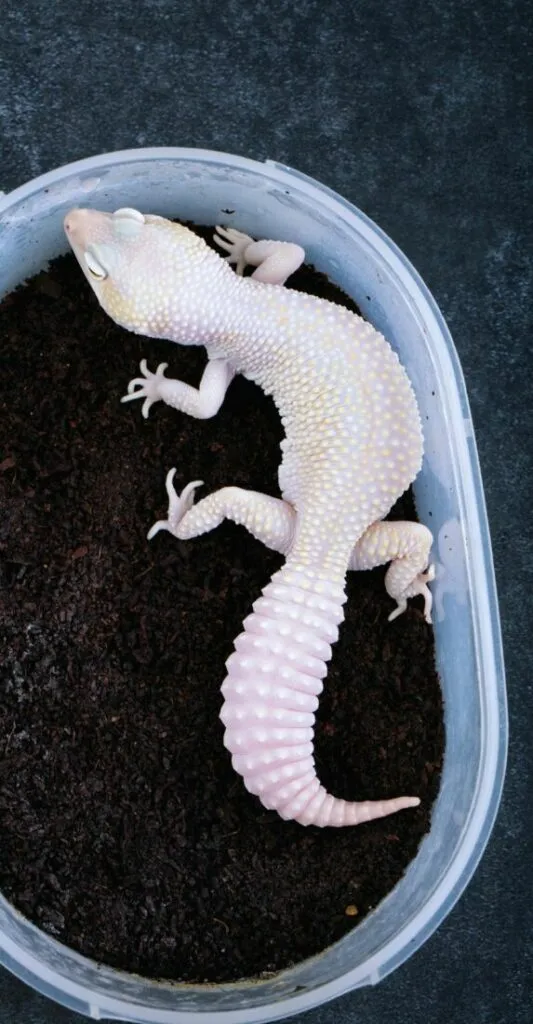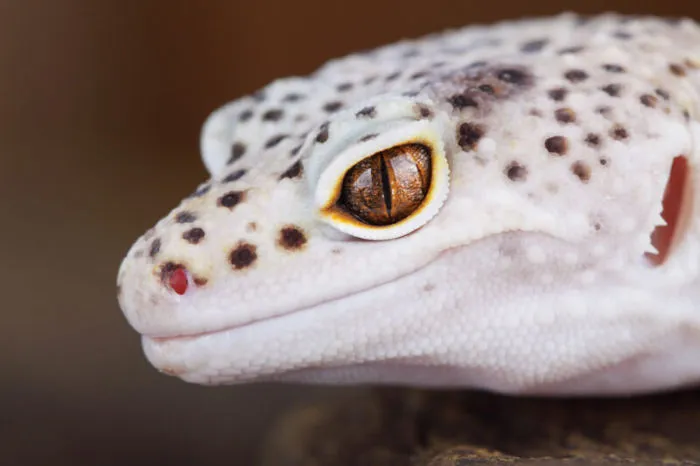
Leopard geckos are among the most popular pets in the lizard family. These amazing pets are insectivores. But are they cannibals, too?
Leopard Geckos do exhibit cannibalistic behavior. They are known to sometimes eat smaller members of their species or even their own young ones. This usually happens if there is a lack of
Even if cannibalism in leopard geckos is possible, it doesn’t mean that you can’t avoid it. We show you the situations that can encourage cannibalism and how to avoid them. We also show you how to keep multiple leopard geckos correctly.
Table of Contents
When do leopard geckos resort to cannibalism?
Leopard geckos are reasonably docile creatures, especially towards their owners. Hence, it might come as a shock that these seemingly harmless animals can eat their own kind.
However, it is common in leopard geckos to even eat their babies shortly after birth. According to John Hopkins University Press, cannibalism in geckos is rarely documented in the wild. It is observed in pet geckos, though.
Overcrowded enclosures
Leopard geckos are territorial animals. Even though they seem docile towards their human owners, these animals are made to survive in the wild.
While it is not well documented, leopard geckos in the wild do attack smaller members of the species and eat them. In captivity, if leopard geckos are kept in crowded spaces, they might try to attack, kill, and eat smaller leos.
Lack of food
In captive leopard geckos, this behavior is usually seen when there is a lack of

Lack of parental instincts
Leopard geckos are awesome pets, but they aren’t great parents. Leopard geckos don’t exhibit protective behavior towards the babies. In the wild, the parents are not responsible for feeding baby leos.
Thus, it is not uncommon for adult leos to eat the babies soon after they are born. They view hatchlings as nothing but an unnecessary inconvenience.
Survival instinct
Pet leopard geckos still have the survival instincts of the wild. They have evolved to look at everything around them as a potential threat. This includes other leos, both big and small. The small ones can thus become prey in their bid to eliminate the threat.
A source of nourishment
An adult leopard gecko will view a baby leo as nothing but a source of essential nutrients. It’s thus, their instinct to try and eat a smaller leo.
Will a leopard gecko eat another adult?
As a general rule, a leopard gecko will eat another only as long as it is small enough to fit into their mouths. Thus, small, weak, or baby leopard geckos are more prone to becoming a meal for stronger adult leos.
Male adults are extremely territorial and are aggressive towards each other. Two adult male geckos housed together are prone to attacking each other and can injure or even kill each other. However, there is no documented evidence of an adult male eating another adult male it just killed.
Are both male and female leos cannibals?
Male leos are known for their aggressiveness. Females are more docile. However, when it comes to cannibalism, there’s no difference between males or females. Female leos will also eat smaller leos or even their own babies. There’s no maternal instinct in leopard geckos.
The female leopard geckos guard their eggs till they hatch. But once the babies are out, they are frankly on their own. The mother might not think twice before eating the babies if she is hungry or irritated with the babies.
It’s not great parenting. But, that’s how leopard geckos are as a species. They aren’t a nurturing lot.
How to prevent leopard geckos from eating each other?
In captivity, you can prevent cannibalism in leopard geckos. In fact, it is one of your responsibilities as a pet owner. Here’s how you can prevent it.
Avoid overcrowding in small enclosures
Housing more than one leo in the same enclosure should be avoided as far as possible. Keeping juvenile as well as adult leopard geckos in the same

Keep your leopard geckos well feed
Leopard geckos are less prone to eating other leos if they are given enough
Keep juveniles and adults in separate enclosures
It is best to house juveniles and adults separately. Housing females with sub-adult leos is also a bad idea. More than anything else, baby leos are looked at by other adults as a source of nourishment.
Hence, once babies hatch out of their eggs, they should be removed immediately and kept in a different enclosure.
Before you put the baby leos back into a common
Avoid housing two males together
Even though adult males won’t eat each other, they still might kill, which is just as bad. Hence, this should be avoided.
Cohousing leopard geckos can be tricky. As a general rule, refer the below table to avoid aggression and ‘accidents’.
| Allowed | Avoid! |
| Two females (adults) | Two adult males |
| Leos of similar size | Juvenile and adult leos |
| One male and three females | Male and only one female |
Even though many people keep multiple leopard geckos together in one
Male leopard geckos are territorial and even female leopard geckos can be highly aggressive towards other leopard geckos.
Also, the reason why it is recommended to keep 3 females with one male leopard gecko is that the male wants to mate quite often. If there is only one female leopard gecko, it can be too much for her.
That’s why we recommend to “spread” this on three females.
Doesn’t sound nice, right? Well, another reason why we recommend keeping only one leopard gecko or keeping them seperately.
Can you tell if a leo might cannibalize?
As mentioned above, avoid housing babies and adults together. But, if for some reason you have kept them in the same enclosure, look for signs that a leo might cannibalize the babies. If you see below signs in adult leos near baby leos, there is a chance of cannibalism.
- The adult looks irritated by the behavior of newborn leos.
- The adult shows aggression towards the baby leos and tries to bite.
- Even if the adult shows apparent distant behavior towards the baby leos, it might soon turn to aggression.
If you notice such behavior, it is best to take out the juveniles and keep them in a separate
What to do if your pet leo eats another smaller leo?
It can be frustrating and even shocking when your pet leopard gecko gobbles up a smaller leo. It might be even more disquieting when baby leos are involved.
However, remember that leopard geckos function on instinct rather than emotion. However, you, as a being capable of emotions, must remember not to get too angry or affected by this.
Accept what has happened and move on. Do not try to harm or punish a leopard gecko that has cannibalized. Make sure to take better precautions the next time to prevent this from happening.
Also, don’t let one incidence of cannibalism affect your preference for leopard geckos as good pets. They truly are great reptile pets to have.
Conclusion
Eating others from your own species seems like a way to move forward towards the extinction of their species. However, leopard geckos have survived quite well in the wild. In captivity, too, leopard geckos have emerged as a popular pet and are quite easily available.
Having said that, it becomes the pet owner’s or breeder’s responsibility to prevent cannibalism in captive leopard geckos. Making sure you don’t house the wrong combinations of leos together and being vigilant is all it takes to keep your pets safe and happy.
- Enchi Ball Python: A Unique and Stunning Morph of Python regius - March 27, 2025
- Emerald Tree Monitor: The Enigmatic Green Guardian of the Rainforest - March 26, 2025
- The Egyptian Cobra (Naja haje): A Fascinating Serpent - March 25, 2025
